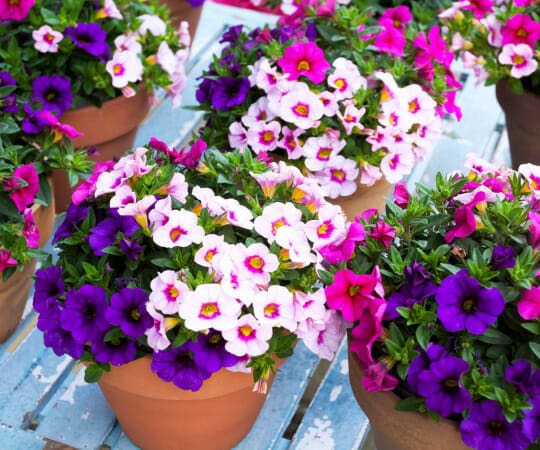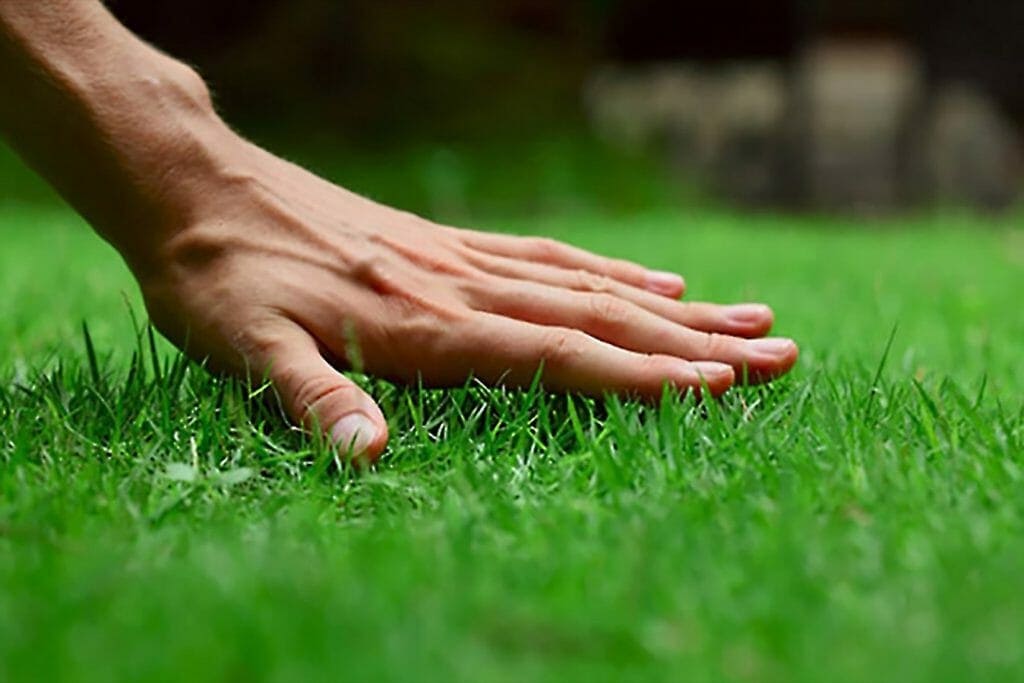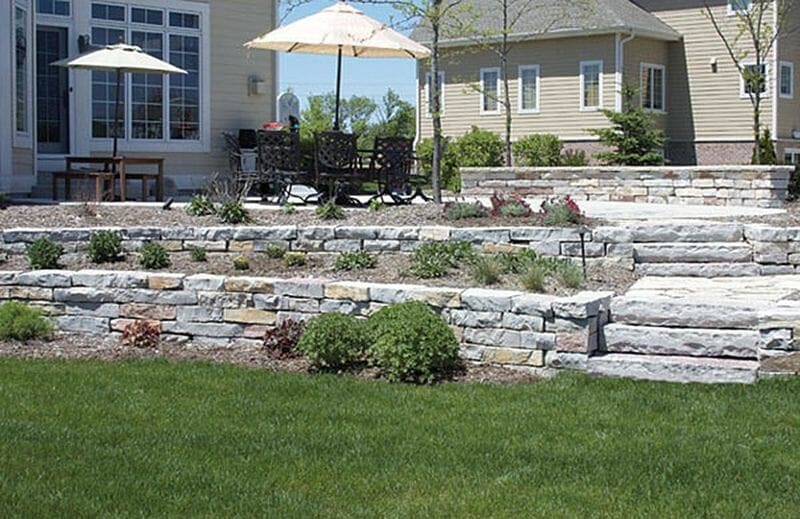Unleashing Your Green Thumb: A Guide to Expert Plant Selection for Your Dream Garden
Are you dreaming of a lush garden filled with vibrant colors and fragrant scents? Do you want to transform your outdoor space into a tranquil oasis that you can enjoy year-round? If so, then it’s time to unearth the expertise of plant selection for your dream garden.
From petunias to palms, there are countless options when it comes to choosing the right plants for your space. The key to creating a successful garden is understanding your local climate and soil conditions. Not all plants thrive in every environment, so it’s important to do your research before making any purchases.
By determining your landscaping goals and taking into account the unique characteristics of your outdoor space, you can choose the perfect mix of plants that will flourish and bring joy to both you and any visitors who come by. In this article, we’ll explore how to select the right plants for your dream garden, as well as how to properly care for them once they’re planted.
So let’s get started on creating the garden of your dreams!
Understand Your Local Climate and Soil Conditions
It’s important to know the climate and soil in your area so you can choose the best plants for a thriving landscape. The first step in understanding your local environment is to evaluate the soil composition.
Soil tests can reveal pH levels, nutrient content, and texture – all of which are crucial factors in plant growth. Once you’ve analyzed your soil, you can select plants that are well-suited to its conditions.
Another factor to consider is microclimate analysis. Microclimates are small areas within a larger region that have unique temperature, humidity, and sunlight patterns. For example, an area shaded by trees may have cooler temperatures than an open field nearby.
By identifying microclimates in your yard or garden, you can choose plants that will thrive in each specific area. Understanding these nuances of your landscape will help you create a cohesive and successful garden design.
So now that you understand the importance of analyzing climate and soil conditions, let’s move on to determining your landscaping goals.
Determine Your Landscaping Goals
When determining your landscaping goals, there are a few key points to keep in mind. First and foremost, consider your aesthetic preferences – what kind of look do you want for your yard? Do you prefer a more natural or structured design?
Next, evaluate the maintenance needs of different plants and features – how much time and effort are you willing to put into upkeep?
Finally, think about water conservation – choose plants that are well-suited to your climate and use water-efficient irrigation methods to reduce waste.
By keeping these factors in mind, you can create a beautiful and sustainable landscape that meets all of your needs.
Consider Your Aesthetic Preferences
Think about what you like visually when it comes to plants for your dream outdoor space. Do you prefer a lush, tropical look with large leaves and vibrant colors? Or do you lean towards a more minimalist approach with simple, clean lines and neutral tones? Whatever your preference may be, consider the following factors to help guide your plant selection process:
- Color schemes: Think about which color combinations appeal most to you. Do you want bold contrasts or subtle harmonies?
- Texture combinations: Consider mixing different textures to create visual interest in your garden. Combine smooth leaves with rough bark or spiky foliage for some variety.
- Seasonal changes: Keep in mind how the plants will change throughout the year. Will they bloom during certain seasons or maintain their appearance all year round?
- Plant size: Determine how much space is available and choose plants that fit accordingly. Consider both height and width when selecting plants.
- Lighting conditions: Ensure that the plants selected can thrive in the lighting conditions specific to your outdoor area.
With these considerations in mind, you can start narrowing down your options for plant selection based on your aesthetic preferences. However, aesthetics alone shouldn’t dictate all of your choices – it’s important to also evaluate maintenance needs before making final decisions.
Evaluate Maintenance Needs
Oh, so you thought creating your dream outdoor space would be all sunshine and rainbows? Well, buckle up because now it’s time to face the harsh reality of evaluating maintenance needs.
When deciding on what plants to choose for your garden, it’s important to consider the amount of time and effort you’re willing to put into maintaining them. If you’re someone who doesn’t have a lot of spare time or simply doesn’t want to spend hours every week tending to your plants, then selecting low maintenance options is key.
Luckily, there are plenty of plant options available that are easy to care for and require minimal upkeep. Some popular choices for low maintenance gardens include succulents, herbs like rosemary or thyme, and shrubs such as boxwood or holly.
Additionally, choosing plants based on their sun exposure needs can help reduce the amount of maintenance required. For example, if you have a shaded area in your garden where nothing seems to grow well anyway, why not select shade-loving plants that won’t need constant attention? By thinking about these factors when making plant selections, you can create a beautiful garden without adding unnecessary stress to your life.
When considering plant selection for a low maintenance garden, it’s also important to think about water conservation. After all, watering plants can be one of the most time-consuming tasks when it comes to gardening. So in the next section, we’ll discuss how choosing water-wise plants can not only save you time but also benefit the environment.
Think About Water Conservation
Now it’s time to consider water conservation in order to save time and benefit the environment while creating your ideal outdoor space. Xeriscaping techniques are a great way to achieve this goal. This method involves using plants that are drought tolerant and require little to no irrigation.
By implementing xeriscaping, you can significantly reduce your water usage and lower your utility bill. When selecting plants for your xeriscape garden, look for species that are adapted to dry conditions such as succulents, cacti, and native grasses. These plants have developed unique survival mechanisms that allow them to thrive in arid environments without much water.
By incorporating these types of plants into your landscape design, you can create a beautiful garden that is both sustainable and low-maintenance. Now that you’ve considered water conservation through xeriscaping techniques, it’s time to choose the right plants for your space so they can flourish with ease.
Choose the Right Plants for Your Space
When it comes to filling your outdoor oasis with greenery, knowing which plants will thrive in your specific area is crucial for success. Plant compatibility and color schemes are important factors to consider when selecting the right plants for your space. Here are some tips to help you choose the perfect plants:
- Research: Before making any purchases, do some research on the types of plants that grow well in your region. Consider factors such as temperature, soil type, and sunlight exposure.
- Size Matters: Make sure you choose plants that fit your space appropriately. Overcrowding can lead to poor growth and health.
- Maintenance Level: Some plants require more care than others, so be sure to choose ones that fit into your lifestyle and schedule.
- Diversity: Mix up the types of plants you select to add visual interest and texture to your garden.
By taking these factors into consideration when selecting your plants, you’re setting yourself up for a thriving garden filled with beautiful blooms and foliage.
Properly caring for those plants is just as important as choosing them carefully – keep reading to learn more!
Properly Care for Your Plants
Now that you’ve chosen the perfect plants for your space, it’s time to properly care for them.
This means paying attention to three key areas: watering and fertilizing, pruning and deadheading, and pest and disease control.
By taking the time to understand these essential aspects of plant care, you’ll be able to enjoy a healthy and thriving garden all year round.
So let’s dive in and explore each of these topics in more detail!
Watering and Fertilizing
Proper watering and fertilizing are essential for the health and vibrancy of any type of greenery in your landscape. Over watering prevention is important because too much water can lead to root rot, which can be fatal to plants. To avoid this, make sure to only water when the top inch of soil feels dry to the touch. If you’re unsure if your plant needs watering, stick your finger into the soil and feel for moisture.
Organic fertilizing methods are a great way to provide nutrients without introducing harmful chemicals into your garden. Compost is a fantastic natural fertilizer that can be made at home using kitchen scraps and yard waste. You can also use worm castings or fish emulsion for an added boost of nutrients. Just make sure not to over-fertilize as this can cause burns on leaves and harm the plant’s roots.
With proper watering and fertilization techniques, your plants will thrive and add beauty to your garden space. As important as it is to care for your plants with proper watering and fertilization techniques, pruning and deadheading are equally necessary steps in maintaining healthy greenery.
Pruning and Deadheading
Trimming and snipping away dead or overgrown parts of your greenery will not only improve their appearance, but also promote growth and vitality.
Pruning techniques vary depending on the plant species, but in general, you’ll want to remove any damaged or diseased branches first. Then, look for any crossing branches that rub against each other, as these can damage the bark and create an entry point for pests and diseases. Cut these branches at their base to prevent further damage.
Timing of deadheading is also important for promoting healthy growth in your plants. Deadheading refers to removing spent blooms from flowering plants to encourage new growth and prolong blooming season. Some plants benefit from regular deadheading throughout the growing season, while others should only be deadheaded once after their main flush of blooms has finished.
Make sure you research the specific needs of each plant in your garden before starting any pruning or deadheading tasks. As you become more familiar with pruning techniques and timing of deadheading for your specific plants, it’s important to also keep an eye out for pests and diseases that may affect them. Learning how to identify common problems early on can help prevent significant damage later on down the line.
Pest and Disease Control
Controlling pests and diseases in your garden is crucial for ensuring the health and longevity of your plants. Integrated Pest Management (IPM) is a holistic approach to pest management that involves using multiple strategies.
Here are some natural remedies you can try as part of your IPM plan:
- Encourage beneficial insects such as ladybugs, lacewings, and praying mantis to control pests.
- Use physical barriers like row covers or netting to keep pests away from plants.
- Rotate crops to prevent the buildup of soil-borne diseases and pests.
- Practice good sanitation by removing diseased plant material promptly.
- Use organic pesticides only when necessary, following label instructions carefully.
Remember that prevention is key to managing pests and diseases in your garden. By incorporating these practices into your routine, you can reduce the need for harsh chemicals while creating a healthy environment for your plants.
To truly enjoy your dream garden, however, it’s important not to get too caught up in the technical aspects of gardening. While it’s essential to take care of pest and disease issues as they arise, don’t forget about taking time to simply appreciate the beauty of nature around you.
Take a moment each day to pause and enjoy all that your garden has to offer – from the vibrant colors of blooming flowers to the soothing sound of rustling leaves on a gentle breeze.
Enjoy Your Dream Garden
As you bask in the beauty of your flourishing oasis, it’s like watching a symphony of colors and textures come to life. The garden design you meticulously planned has come to fruition, and each plant variety is thriving in its own space.
It’s time to sit back and enjoy the fruits of your labor. But don’t forget that maintaining your dream garden is an ongoing process. Regular watering, fertilization, pruning, and pest control are essential tasks to keep your plants healthy and vibrant. Take some time every week to walk through your garden and inspect each plant for any signs of damage or disease. Catching problems early can save you time, money, and heartache in the long run.
In addition to maintenance tasks, consider adding outdoor seating areas or decorative elements such as bird feeders or water features to enhance the enjoyment of your dream garden. Invite friends over for a backyard barbecue or simply relax with a book as you soak up all the natural beauty around you.
With proper care and attention, your dream garden can be a source of joy for years to come.
Frequently Asked Questions
How often should I fertilize my plants?
To keep your plants healthy and thriving, it’s important to fertilize them regularly. Fertilizer frequency depends on the type of plant and the soil nutrients present in your garden.
Generally, most plants benefit from fertilizer every 2-4 weeks during their active growing season. However, some plants require less frequent fertilizing while others need more. It’s important to read the instructions on your chosen fertilizer and follow them accordingly.
Over-fertilizing can be just as harmful as under-fertilizing, so be mindful of how much you’re using. Regular fertilizing helps ensure that your plants are getting the necessary nutrients they need to grow strong and produce beautiful blooms or fruits.
What types of pests and diseases should I be aware of in my area?
To keep your garden healthy, it’s important to be aware of potential pests and diseases in your area. Integrated pest management (IPM) is a holistic approach that includes prevention, identification, and control of pests and diseases using natural methods whenever possible.
When selecting plants for your garden, consider disease-resistant varieties to reduce the likelihood of problems. Regularly inspecting your plants for signs of damage or infestation can help catch issues early on before they become major problems.
By staying vigilant and proactive with IPM techniques, you can maintain a beautiful and thriving garden without relying on harsh chemicals or harmful pesticides.
Can I use rainwater to water my plants?
You can definitely use rainwater to water your plants, and it actually has some benefits over tap water. Rainwater doesn’t contain any added chemicals or minerals that might harm your plants, so it’s a more natural option. Plus, it’s free!
There are a few different methods you can use to collect rainwater for your garden, such as setting up a barrel under a downspout or using a rain chain to direct the flow of water into a container. Just make sure to filter out any debris before using the collected water on your plants.
By collecting rainwater, you can save money on your water bill and give your plants the best possible care.
How do I know when to prune my plants?
Knowing when to prune your plants is crucial for maintaining their health and appearance. Different types of plants require different pruning techniques, so it’s important to research the specific needs of each plant in your garden.
Some general tips include pruning after flowering, avoiding cutting too close to the trunk or stem, and using clean and sharp tools to prevent damage or disease. The best pruning tools will depend on the size and type of plant you’re working with, but some common options include hand pruners, loppers, and saws.
With proper technique and tools, pruning can help promote growth and shape your plants into beautiful additions to your dream garden.
What are some common mistakes to avoid when designing and maintaining a garden?
Congratulations on your decision to design and maintain a garden! However, be warned that there are common pitfalls you should avoid.
First, don’t fall into the trap of overcomplicating your garden design. Keep it simple and stick to a cohesive theme.
Second, make sure you select plants that are appropriate for your climate and soil type. Don’t just choose what looks pretty in the store without doing research first.
Third, when it comes to maintenance mistakes, don’t neglect watering or pruning your plants regularly.
And finally, always keep an eye out for pests and diseases that can quickly ruin all your hard work.
By following these plant selection advice and garden design tips, you’ll be well on your way to creating a beautiful and thriving garden that will bring joy for years to come!
Conclusion
Congratulations! You’ve taken the first step towards creating your dream garden. By following the steps outlined in this article, you’re well on your way to having a lush oasis of greenery that’ll make all your neighbors envious.
Understanding your local climate and soil conditions is crucial to selecting plants that’ll thrive in your space. This knowledge will save you time and money in the long run.
Determining your landscaping goals ensures that you create a cohesive and aesthetically pleasing design.
Choosing the right plants for your space can be overwhelming, but with proper research and planning, you can select plants that complement each other and enhance the beauty of your garden.
Lastly, caring for your plants is just as important as selecting them. Regular maintenance such as watering, pruning, and fertilizing will ensure their health and longevity.
As you embark on this gardening journey, remember that it’s a process of trial-and-error. Don’t be discouraged by setbacks or failures; instead view them as opportunities to learn and grow.
With patience, persistence, and passion for gardening, soon enough you’ll be enjoying an outdoor paradise like no other.
In summary: from petunias to palms – let nature’s beauty inspire you as you unearth the expertise of plant selection for your dream garden. Like a canvas waiting for its artist’s brush strokes or an empty stage awaiting its actors’ performance – may it come alive under your care with colors so vibrant they dance before our eyes!
Related Sources
How to Choose the Perfect Plants for Your Garden: Creating Your Dream Garden





